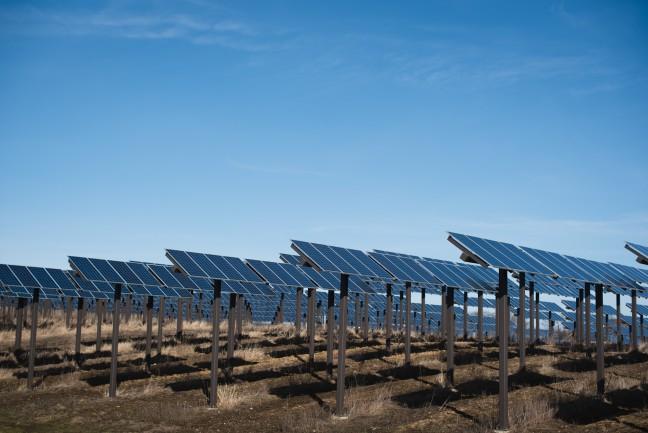Earlier this March, Dane County Executive Joe Parisi announced a plan to install a massive solar energy site outside the Dane County Airport, creating the second largest solar energy project in Wisconsin. “Given its role in sustaining and growing our local economy, we think the airport is a perfect fit for this bold project,” Parisi said in an interview with the Wisconsin State Journal.
The State of Wisconsin used to be a pioneer in the U.S. in terms of renewable energy. In 1998, Wisconsin became the sixth state to establish a Renewable Portfolio Standard — a statement utilities must generate a minimum percentage of their energy from renewable resources by a certain date.
Wisconsin made a commitment to have 10 percent of power generation come from renewable resources by 2015. The state achieved that goal two years early, with renewables making up around 10 percent of energy resources in 2013. Since achieving the goal, however, Wisconsin has failed to make further headway. According to the U.S. Energy Information Administration, Wisconsin’s renewable energy use actually dropped to around 8 percent in 2016.
Wisconsin achieved the first goal in good time but failed to update the goals, so we have since been falling behind other states. Our neighbors in Minnesota did not establish an RPS until 2007, but Minnesota has since far surpassed Wisconsin, with renewables comprising roughly 25 percent of their energy resources.
Since taking office in 2011, Gov. Scott Walker has not only neglected environmentalism, he has actively worked to dismantle Wisconsin’s prior progressive environmental legacy. In an article about Walker’s participation in environmental legislation, Scientific American wrote, “Walker has moved to reduce the role of science in environmental policymaking and to silence discussion of controversial subjects, including climate change.”
The article goes on to explain how Walker has loosened restrictions on iron mining, building on wetlands and phosphorus production in state waterways, while simultaneously increasing restrictions on wind power.
With such little productive action from the state, the onus is on the cities to take action. The latest airport solar panel project comes as a result of a proposal from the Sustainable Madison Committee.
According to The Badger Herald, the committee’s other ideas include equipping Madison schools with solar panels, charging homeowners more for higher electricity usage as opposed to a fixed flat rate and utilizing biomass as an energy source more than fracking gas. These projects are all part of an effort to transition the city to rely exclusively on renewable energy.
Dane County also recently announced the commencement of a $1.1 million project at the Alliant Energy Center, which includes plans to revamp the lighting structures using more energy efficient apparatuses. Also, in 2016, the city of Madison announced a plan to reduce 80 percent of carbon emissions by 2050.
In December 2017, Forbes Magazine wrote, “Cities like Madison lead the way to local clean energy,” lauding our city for its efforts in pursuit of 100 percent renewable energy. Madison’s initiatives have gained national support and praise, and other Wisconsin cities should take that as an example.
As long as Walker sits in the Capitol, the state government is not going to make massive strides toward developing modern energy usage policy, but the buck can’t stop there. It’s up to the cities to make a change and to reaffirm Wisconsin’s legacy of environmentalism.
Dane County has taken the right steps. Cities and municipalities should not sit around and wait for the state government to lead the way — Wisconsin can and must reinvigorate its commitment to sound, progressive environmental policy by starting at the city and county levels.
Cait Gibbons (cgibbons3@wisc.edu) is a sophomore majoring in math with a certificate in Chinese.


